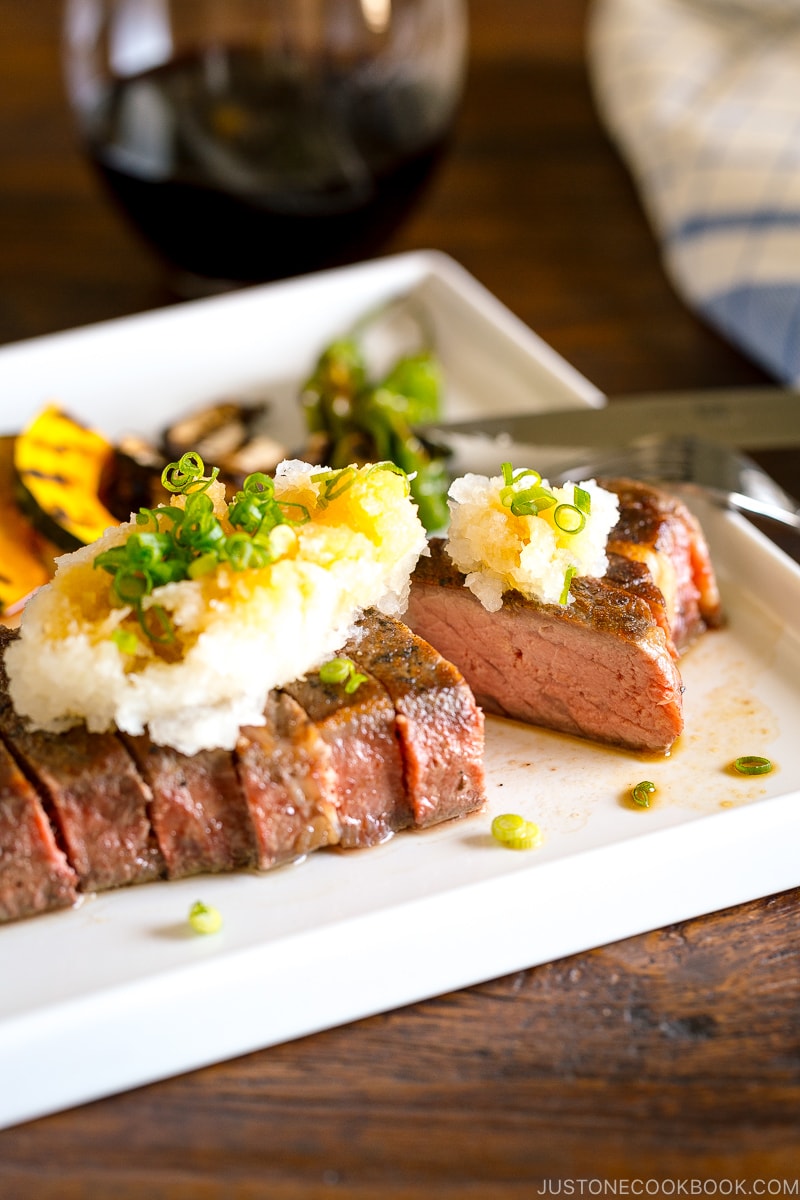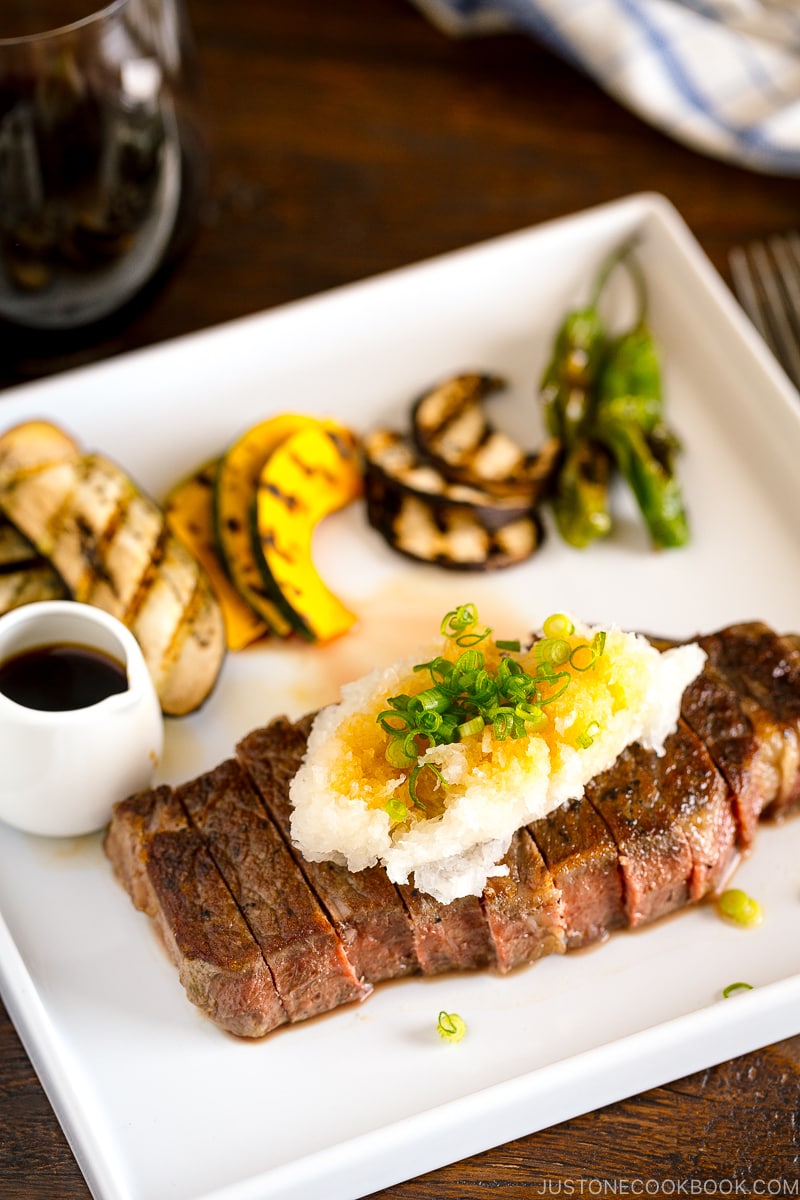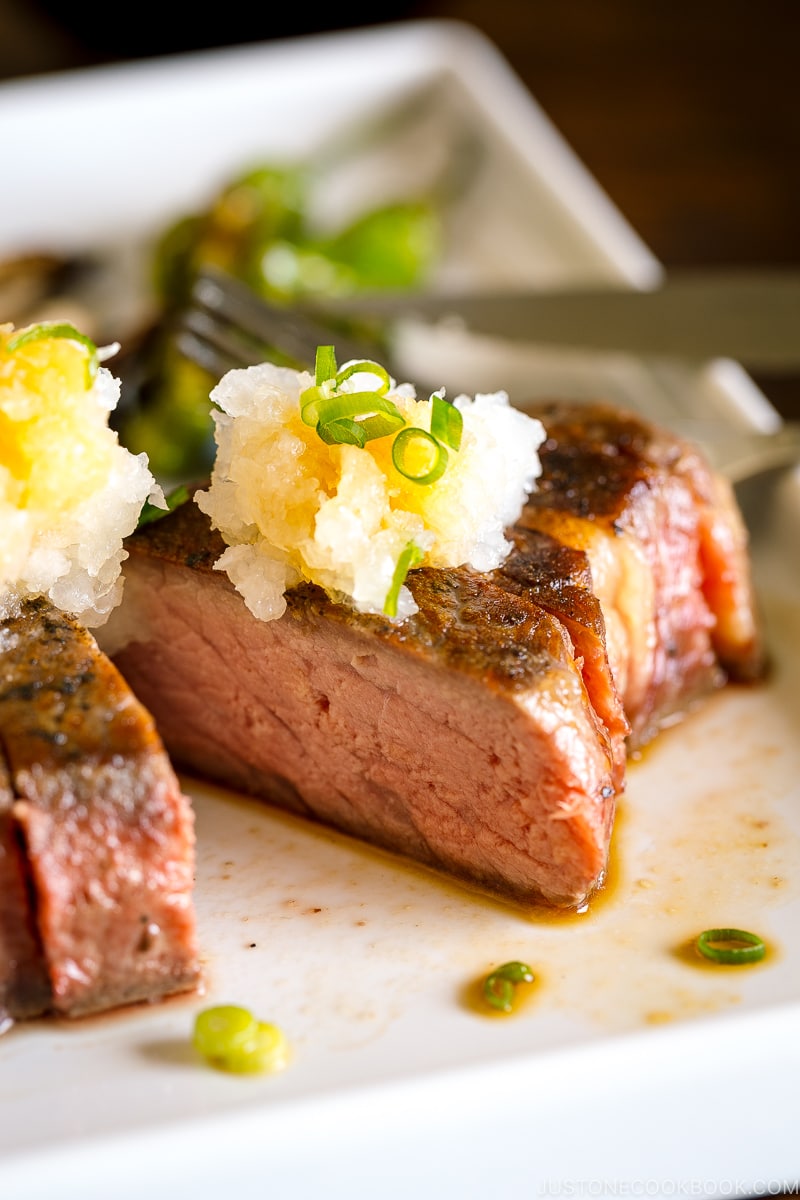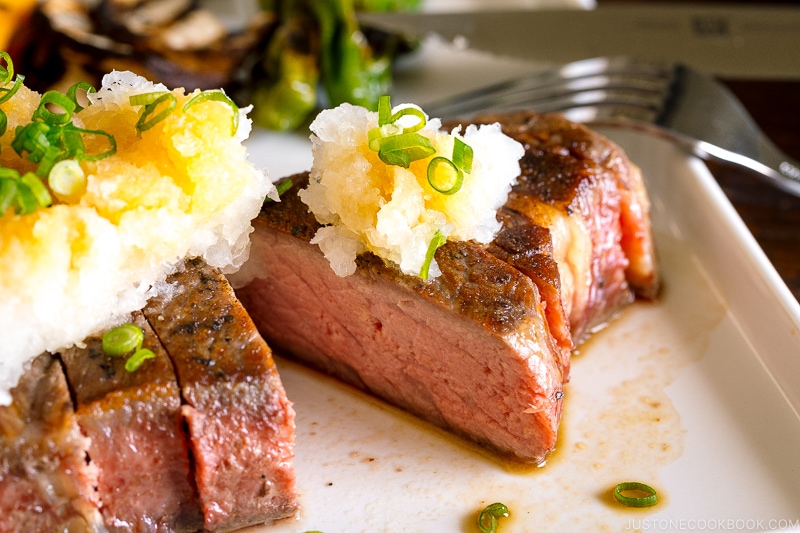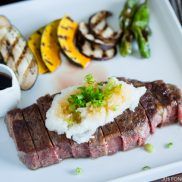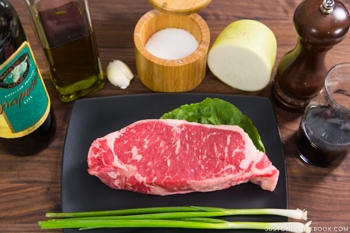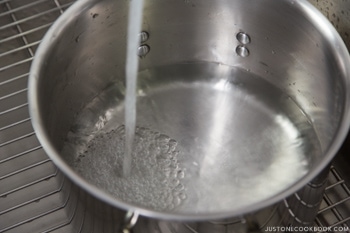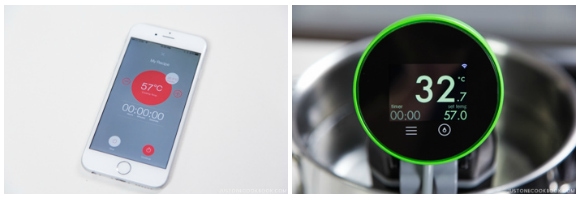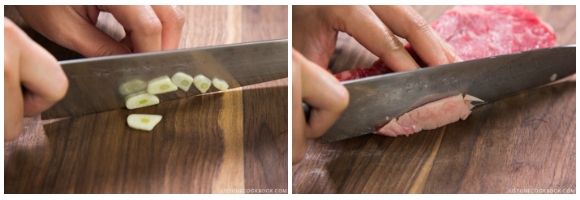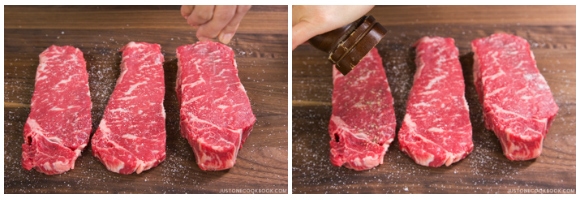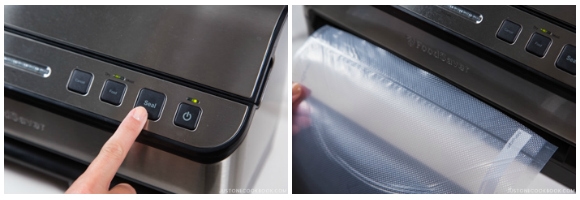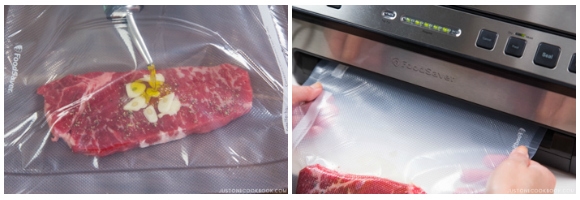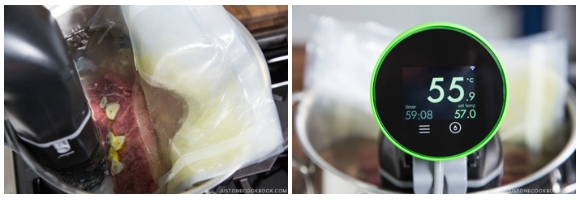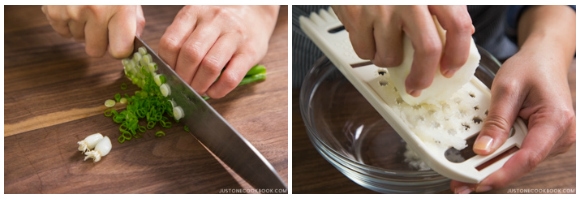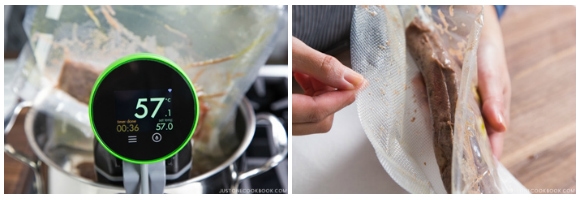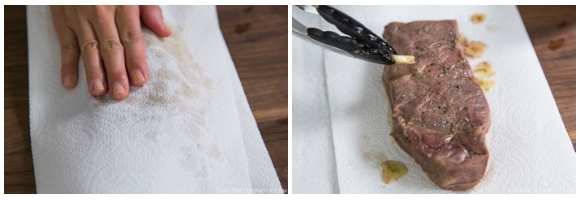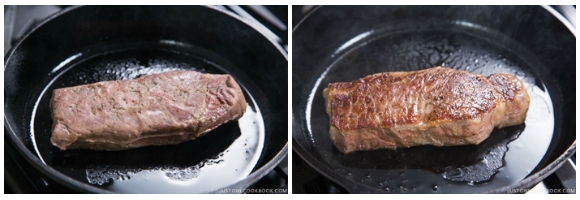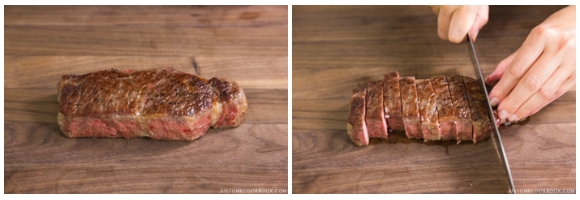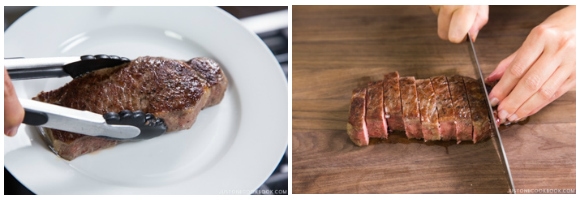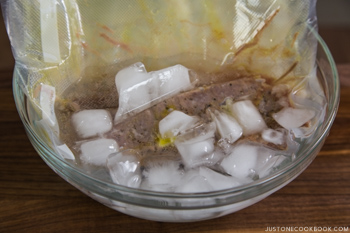At the dinner party you host next time, your steak will be perfect. Whether you are cooking for two or for a large party, no sweat. Everyone will get a perfectly cooked steak on their plate. How is that possible? I’ll show you how I make Japanese-Style Sous Vide Steaks or Wafu Steak (和風ステーキ).
What’s Sous Vide?
Sous vide (/suːˈviːd/; French for “under vacuum”) cooking is a method of cooking in which vacuum-sealed food is placed in a temperature-controlled water bath. You set the temperature of the water exactly where you want it to be (typically much lower than normally used for cooking), around 131 to 140°F (55 to 60°C) for meat and higher for vegetables. Since the water is maintained at the temperature you want the food to reach, you don’t have to worry about overcooking or burning the food. The idea of the water bath technique is to cook the food evenly, ensuring that the inside is properly cooked without overcooking the outside, and retains moisture.
Benefits of Sous Vide Cooking
No Over-/UnderCooking: You can control the texture of the food and eliminate any chance of over-or undercooking the food item because the bath temperature is the same as the target cooking temperature. Perfectly Moist: Since the food is sealed in a vacuum bag, none of the moisture and flavors is lost through the cooking process vs. a grill or a stovetop. The protein stays super juicy and flavorful, you no longer have to figure out exactly how long to cook. Evenly Cooked: It’s challenging to prepare irregularly shaped or thick food items on a stove. With sous vide cooking, it will come out perfectly as the optimal temperature will be reached throughout the food item. More Flavor & Aroma: Spices or other ingredients added to the food item in the bag transmit their flavor more intensely than during normal cooking. Do not overseason the food.
How to Perfectly Sous Vide Steaks
If you are going to cook a medium-rare steak, you would submerge the bag of raw steak at 135°F (57°C) and leave it in the temperature-controlled water bath until the steak reaches that temperature. Hence, the cooking time is longer than normal cooking times.
Recommended Temperatures for Steak Doneness
Based on my own research on the internet, here are the guidelines for cooking steak. Rare: 120°F / 49°CMedium Rare: 135°F / 57°CMedium: 140°F / 60°CMedium Well: 150°F / 66°CWell Done: 160°F / 71°C
The Sous Vide Equipment You’ll Need
I find these two tools helpful when I sous vide at home. An Immersion Circulator: It’s the device that you insert into a pot of water or tub. The idea is fairly simple. It heats and circulates the water to a precise temperature in the pot. For this recipe, I used the Wifi Nomiku and I love this sleek device! In the beginning, I wasn’t sure if the Wifi functionality would be handy. However, as soon as I started using it, it made perfect sense. It was really easy to keep track of the cooking process on my phone even when I was out of the house. It also doesn’t take up too much space in your storage space compared to Sous Vide Supreme Water Oven. A Vacuum Sealer: Mr. JOC purchased a FoodSaver last year at Costco to store foods that we buy in bulk and to keep the leftover foods fresh for a longer time. Now we’ve been using our FoodSaver for sous vide cooking as well. Alternatively, many people use a heavy-duty plastic zipper-lock bag (but the air has to be pressed out of it) if they don’t have a vacuum sealer. It’s okay to use those bags as long as they are rated for higher-temperature cooking. Wish to learn more about Japanese cooking? Sign up for our free newsletter to receive cooking tips & recipe updates! And stay in touch with me on Facebook, Pinterest, YouTube, and Instagram.
